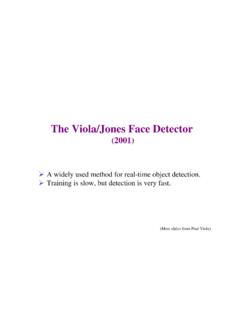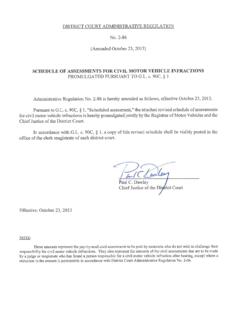Transcription of Pocket Guide To Brick Construction - Building Materials
1 Pocket Guide To Brick Construction ACME Brick COMPANY. Pocket Guide TO. Brick Construction . This Pocket Guide belongs This publication 2009 Acme Brick Company. All rights reserved. No part of this book may be reproduced by any means, conventional or electronic, without written consent obtained in advance from Acme Brick Company Technical Services Department. Revisions: Oct 2002, Jan 2004, June 2008, May 2009. Table of Contents Glossary of Terms ..5-39. Brick Position Nomenclature .. 40. Estimating Area and Volume .. 41. Length Unit Conversion Tables .. 42. Metric Conversion Table .. 43. Common Brick Sizes .. 44. ASTM Speci cation Numbers ..45-49. ASTM C-216 and C-652 Condensed .. 50. Brick Size and Weight Information .. 51. Brick Manufacturing Information ..52-53. Mortar Joints .. 54. Mortar & Grout Proportions by Volume ..55-56. Mortar Cost Calculations ..57-61. Guide for the Selection of Masonry Mortars .. 62. Mortar Color .. 63. Residential Wall Cost Calculations.
2 64. Special Shapes (Acme s Philosophy) ..65-67. Special Shapes Considerations .. 68. Traditional Pattern Bonds .. 69. Brick Paving Bond Patterns .. 70. Cleaning and Sealing Pavers ..71-72. 3. Table of Contents (continued). Cleaning and Product Recommendations ..73-79. ACI 530-05, Chapter 6: Veneer ..80-84. ACI 530-05, Chapter 7: Glass Unit Masonry..85-86. Brick Veneer: Steel Studs .. 87. Flashing and Weep Holes .. 88. Tie Spacing .. 89. Recommended Minimum Corrosion Protection .. 90. Wall Ties ..91-92. Fireplaces and Chimneys ..93-94. Steel Lintels ..95-96. Galvanized-Sheet Gage, Reinforcing Bars & Wire Info .. 97. Cold Weather Masonry .. 98. Thermal Movement .. 99. Loadbearing Walls .. 100. Contemporary Design Criteria ..101-102. King Size Brick Walls..103-110. Modular Size Brick Walls..111-120. Utility Size Brick Walls ..121-123. 4. GLOSSARY. Absorption - The amount of water that a solid or hollow clay or concrete masonry unit absorbs when either immersed in cold or boiling water for a speci ed length of time; expressed as a percentage of the dry unit weight.
3 Usually the lower the per- centage the more dense the masonry unit. Abutment - The supporting wall or pier that receives the thrust of, or dispersed load imposed on an arch. Accelerator - An ingredient added to mortar to speed hydration of cementitious components to hasten set time. Acid Resistant Brick - Brick which do not deteriorate in strong acids. Brick which will not display adverse effects of corrosion or general structural deterioration when subjected to chemicals found to have a high positive or negative ph factor. Commonly installed with like resistant mortars. Actual Dimension - The real measured size of a particular unit, not accounting for including any adjacent or expected thickness of mortar joints, which is typical for expressions of nominal thicknesses. Adhesion Bond - The physical binding of adjacent masonry units or masonry units to a substrate by means of an applied mortar or other cementitious material by being drawn into the micro- scopic surface irregularities (pores) of the masonry units by means of capillary action water absorbed from the mortar by the masonry units thereby creating a somewhat homogeneous interface between mortar and masonry units.
4 5. Admixtures - Ingredients added to impart special properties to mor- tar or grout. Traditional Materials other than water, aggregates, masonry lime, masonry cement, and Portland cement used as an ingredient of concrete, mortar or grout and added to the mix immediately before or during mixing are admixtures. Adobe Brick - Large, roughly molded, sun-dried clay Brick of various sizes. May be red to improve strength characteristics and color variety. Sometimes referred to as burned adobe. Aggregates - An inert granular material such as sand, gravel, crushed stone, vermiculite, perlite, and blast furnace slag, which are bound together with cement in concrete, grout and/or mortar. Air Entraining - The capability of material or process to develop a system of disbursing of minute bubbles of air in the cement paste of mortar or concrete during mixing. Allowable Loads - The permitted and projected safe load capacity through testing or calculations for a given structural element, including an acceptable safety factor for a given material.
5 Anchor - Device used to attach masonry to a structural support. Angle Brick - Any Brick or masonry unit shaped to an oblique angle to t a salient corner. Angle Closer - A closure unit. Apron Wall - The portion of a wall between a sill and the wall below. Arch - A vertically curved compressive structural member spanning openings or recesses. 6. Arch Brick - Wedge-shaped Brick for special use in an arch. Also refers to the hard burned Brick units found in the arch section of a scove kiln. Arching Action - Ability of a deep masonry section to carry verti- cal loads through an arc-shaped compression region within its depth. Lintels are often designed to support only a 45-degree triangular portion of masonry above them, because the remain- ing masonry is supported by arching action. Arti cial Stone - A mixture of stone chips or fragments embedded in a matrix of cement or plaster with the surface either ground, polished or molded into slabs of varying size and dimension to lend the appearance and feel of real stone.
6 Ashlar Masonry - Generally square or rectangular masonry units having sawed or dressed bedding and joint surfaces, typically laid in mortar. Units may be set in wall in either a stacked, coursed or random coursing pattern. Ashlar, Pattern - Masonry composed of bonded blocks of concrete, either rectangular or square, always of two or more sizes; if the pattern is repeated, it is patterned ashlar; if the pattern is not repeated, it is random ashlar. Autoclave - In the production of concrete masonry units a curing chamber which utilizes steam under pressure to accelerate hydration of concrete masonry units. Axial Load - Load exerted along the longitudinal axis of a mem- ber. Backup - That part of a multi-wythe masonry wall which is behind the facing wythe. 7. Band Course - A continuous, horizontal band of masonry marking a division in the wall elevation. Sometimes called belt course, string course, or sill course. Bat - A piece of Brick , usually half the full size or smaller.
7 Batter - Masonry that is receding or sloping back in successive courses; the opposite of a corbel. Beam - A structural member designed to resist exure (bending). Bearing Wall - A wall that supports vertical loads in addition to its own weight. Bed - (1) A layer (stratum) of rock between two bedding planes. (2) In layered stone used for Building , a surface parallel to the strati cation. (3) In Construction , the bottom surface of the masonry unit as it lies in the wall or other structure. Bed Joint - The horizontal layer of mortar on which a masonry unit is set. Bedded Area - The area of the surface of a masonry unit which is in contact with the bed joint. Belt Course - A band course. Bevel - An inclined surface of a solid object which connects two orthogonal sides. Bond - (1) The arrangement of units to provide strength, stability, and pattern. (2) Adhesion between mortar or grout and ma- sonry units or reinforcement. (3) To connect wythes or units.
8 (4) Tying various parts of a masonry wall by lapping units one over another or with metal ties or reinforcing. 8. Bond Beam - (1) The course or courses of masonry units reinforced with longitudinal bars and designed to resist the longitudinal exural and tensile forces in a masonry wall. (2) A horizontal grouted element within masonry in which reinforcement is embedded. Bond Breaker - A material used to prevent adhesion between two surfaces. Bond Course - A course consisting of units that overlap more than one wythe of masonry. Bond Pattern - The pattern formed by the masonry units and the mortar joints on the face of a wall. The pattern may result from the type of structural bond used or may be purely a decorative one unrelated to the structural bonding. Bond Strength - Resistance to separation of mortar from masonry units, grout, reinforcing steel or other Materials . Bonded Wall - A masonry wall in which two or more wythes are bonded to act as a unit.
9 Bonder - A masonry unit that overlaps two or more adjacent wythes of masonry to bond or tie them together. Also called a bond header. Brick - A solid or hollow manufactured masonry unit, usually formed into a small rectangular prism. Brick Type - Designation for facing Brick that indicates tolerance, chippage, and distortion. Expressed as face Brick standard (FBS), face Brick extra (FBX), and face Brick architectural (FBA) for solid Brick , and hollow Brick standard (HBS), hollow Brick extra (HBX), hollow Brick architectural (HBA), and hollow Brick basic (HBB) for hollow Brick . 9. Buttress - A projecting mass of masonry set at an angle to or bonded into a wall that it strengthens or supports. A buttress decreases in its cross-sectional area from top to base. C/B Ratio - Saturation coef cient. Calcite - A mineral form of calcium carbonate, principal constitu- ent of most limestones. Calcium Silicate Brick - Brick made primarily from sand and lime.
10 Cantilever - A structural member, supported at only one end, that projects from its support. Capacity Insulation - The ability of masonry to resist heat transfer by storing. Capstone - Any single stone at the top of a masonry structure. Carbonation - Reaction between carbon dioxide and calcium compounds, especially in cement paste, mortar, or concrete, to produce calcium carbonate. Cast Stone - (1) A precast Building material manufactured from concrete. (2) A re ned architectural precast concrete product manufactured to resemble cut and dressed natural stone. Caulking - Sealing joints in masonry with a resilient compound such as silicones or rubber-based Materials . Cavity Wall - A wall built of masonry units arranged to provide a continuous air space within the wall (with or without insulating material) and in which the inner and outer wythes of the wall are tied together with metal ties or headers. 10. Cavity Wall Tie - A rigid, corrosion-resistant metal tie that bonds two wythes of a cavity wall together.







